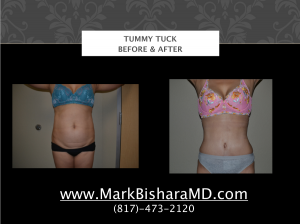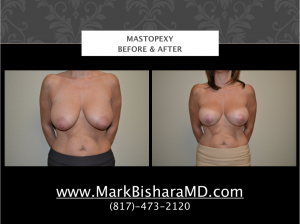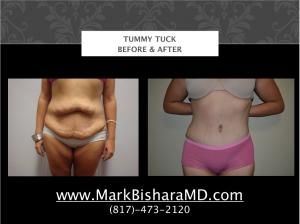
WHAT’S THE ‘BEST’ TIME FOR BREAST AUGMENTATION?
For women who are interested in breast enhancement, one of the biggest questions is, “What’s the best time for breast augmentation?”
To determine that answer, you need to ask yourself why exactly you’re choosing the procedure in the first place. Many women choose breast augmentation because they want to have a beautiful body for the summer and beyond. After all, the summer means more time at the pool and the beach, and more time in a bikini.
Patients should think about the time they’ll spend resting and recovering after the procedure.
Women who have breast augmentation are going to need a few days to begin the recovery process and start to feel like themselves again.
So is there a universally-accepted time that is considered the best time for breast augmentation? Again, it depends on a woman’s goals and needs.
WINTER AND FALL: THE OPTIMAL TIME FOR BREAST AUGMENTATION?
Many women have found that the “best” time for breast augmentation procedures is in the fall or winter months. For starters, the colder weather means heavier, less-revealing clothing. That means you can recover privately. With fewer outdoor activities, it also makes it easier to rest up and focus on recovery.
Many breast augmentation patients agree that getting the procedure done in the fall and winter allows the most time for healing and, when summer comes, they feel great showing off their new curves, whether it’s at the pool, beach, or any vacation spot.
No matter what time of year you decide to schedule cosmetic surgery, there are many other considerations to keep in mind. At the top of your list has to be the skill and experience of your surgeon. Look for a surgeon who has extensive experience performing breast augmentation procedures. Also review your implant options so you can determine which implant style is best for your aesthetic goals. By paying attention to all of the variables that go into making breast enlargement a successful and rewarding experience, you can make the most of your procedure.
If you are considering breast augmentation in the Dallas, TX area, call and schedule a consult now. At the office of Dr. Mark Bishara and The Paragon Plastic Surgery & Med Spa, we offer the Vectra 3-d Imaging system , so you can take a 3-dimensional sneak peek at yourself and how you might appear after breast implants. Please call our office at (817) 473-2120 or visit our website at www.MarkBisharaMD.com.
¿Qué hora es “mejor” para el aumento mamario?
Para las mujeres que están interesadas en la mejora de mama, una de las mayores preguntas es, “¿Cuál es el mejor momento para el aumento mamario?”
Para determinar la respuesta, usted tiene que preguntarse por qué es exactamente lo que está eligiendo el procedimiento en el primer lugar. Muchas mujeres optan por el aumento de senos porque quieren tener un cuerpo hermoso para el verano y más allá. Después de todo, el verano significa más tiempo en la piscina y la playa, y más tiempo en bikini.
Los pacientes deberían pensar en el tiempo que va a pasar en reposo y la recuperación después del procedimiento.
Las mujeres que tienen el aumento de senos van a necesitar unos días para comenzar el proceso de recuperación y empezar a sentirse como ellos de nuevo.
Entonces, ¿hay un tiempo universalmente aceptada que se considera el mejor momento para el aumento mamario? Una vez más, depende de los objetivos y necesidades de la mujer.
INVIERNO Y CAÍDA: El momento óptimo para el aumento mamario?
Muchas mujeres han encontrado que el “mejor” momento para los procedimientos de aumento de senos es en los meses de otoño o invierno. Para empezar, el tiempo más frío significa más pesada ropa, menos reveladora. Esto significa que puede recuperar de forma privada. Con menos actividades al aire libre, sino que también hace que sea más fácil para descansar y centrarse en la recuperación.
Muchos pacientes de aumento de senos están de acuerdo en que obtener el procedimiento realizado en el otoño y el invierno permite más tiempo para la curación y, cuando llega el verano, se sienten gran mostrando sus nuevas curvas, ya sea en la piscina, la playa o cualquier lugar de vacaciones.
No importa en qué época del año usted decide programar la cirugía estética, hay muchas otras consideraciones a tener en cuenta. En la parte superior de su lista tiene que ser la habilidad y experiencia del cirujano. Busque un cirujano con amplia experiencia realizando procedimientos de aumento de senos. También revise sus opciones de implantes para que pueda determinar qué implante estilo es mejor para sus objetivos estéticos. Al prestar atención a todas las variables que van a hacer la ampliación de mama una experiencia exitosa y gratificante, puede hacer que la mayor parte de su procedimiento.
Si usted está considerando el aumento del pecho en el área de Dallas, TX, llamar y programar una consulta ahora. En la oficina del Dr. Mark Bishara y La Cirugía Plástica y Paragon Med Spa, ofrecemos el 3-d sistema Imaging Vectra, para que pueda tomar una ojeada en 3 dimensiones a ti mismo y cómo puede aparecer después de los implantes mamarios. Por favor llame a nuestra oficina al (817) 473-2120 o visite nuestro sitio web en www.MarkBisharaMD.com.
 About Silicone Implants
About Silicone Implants











